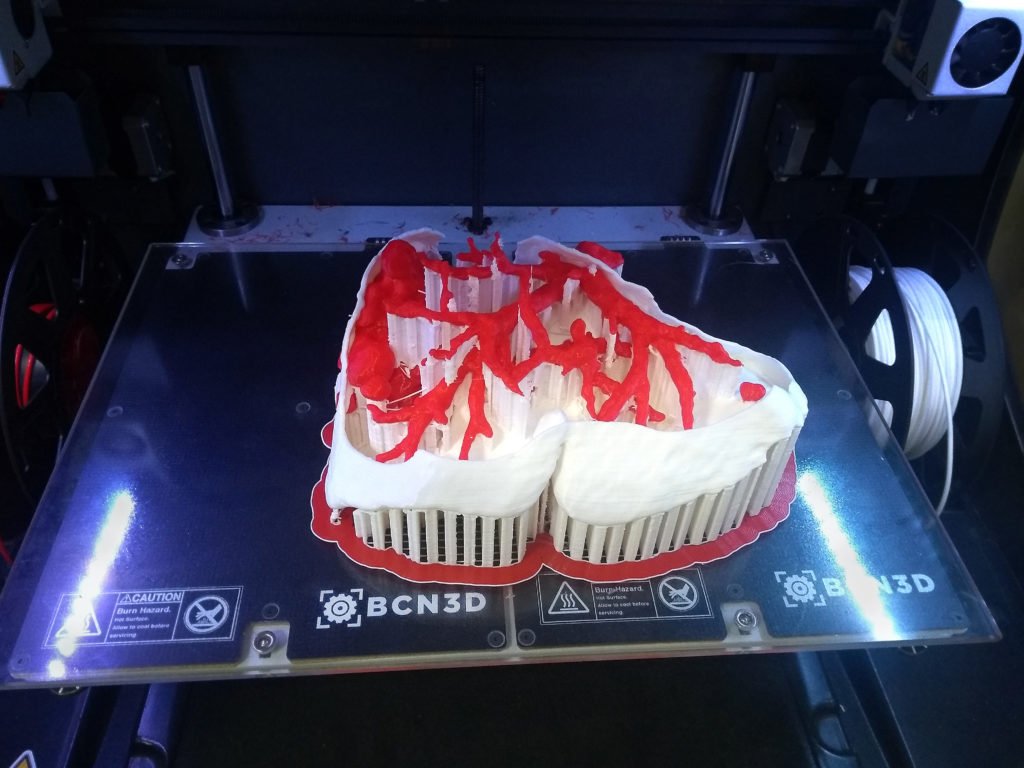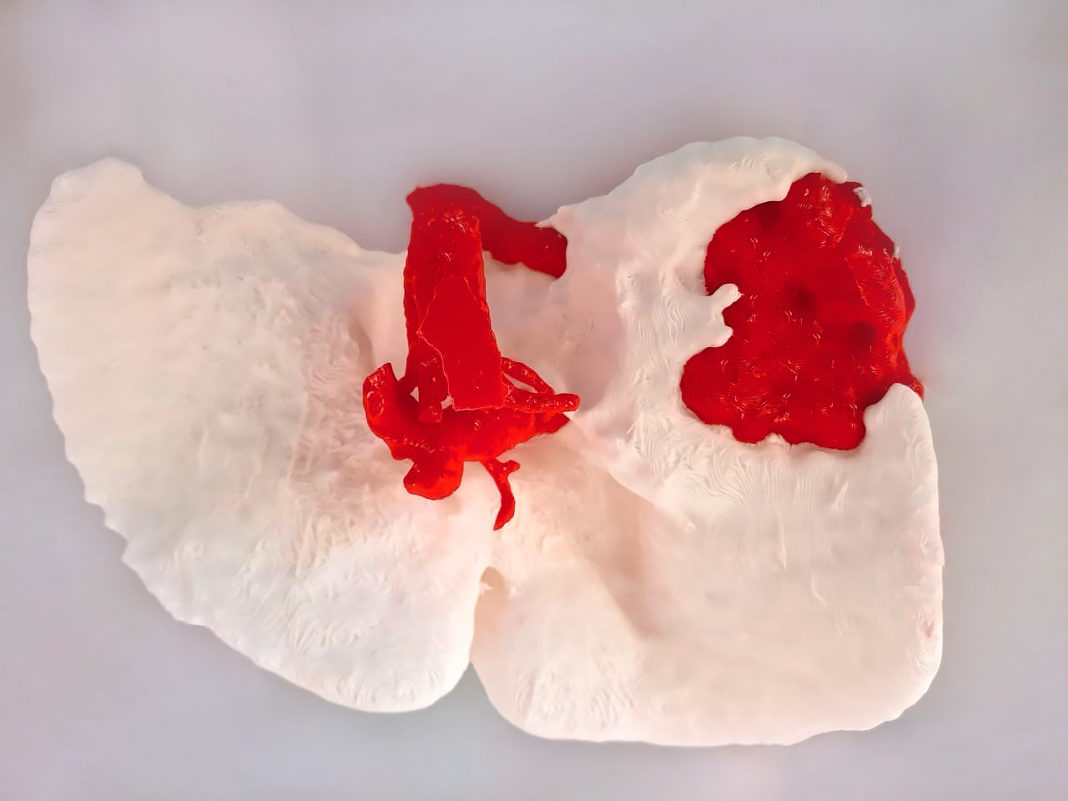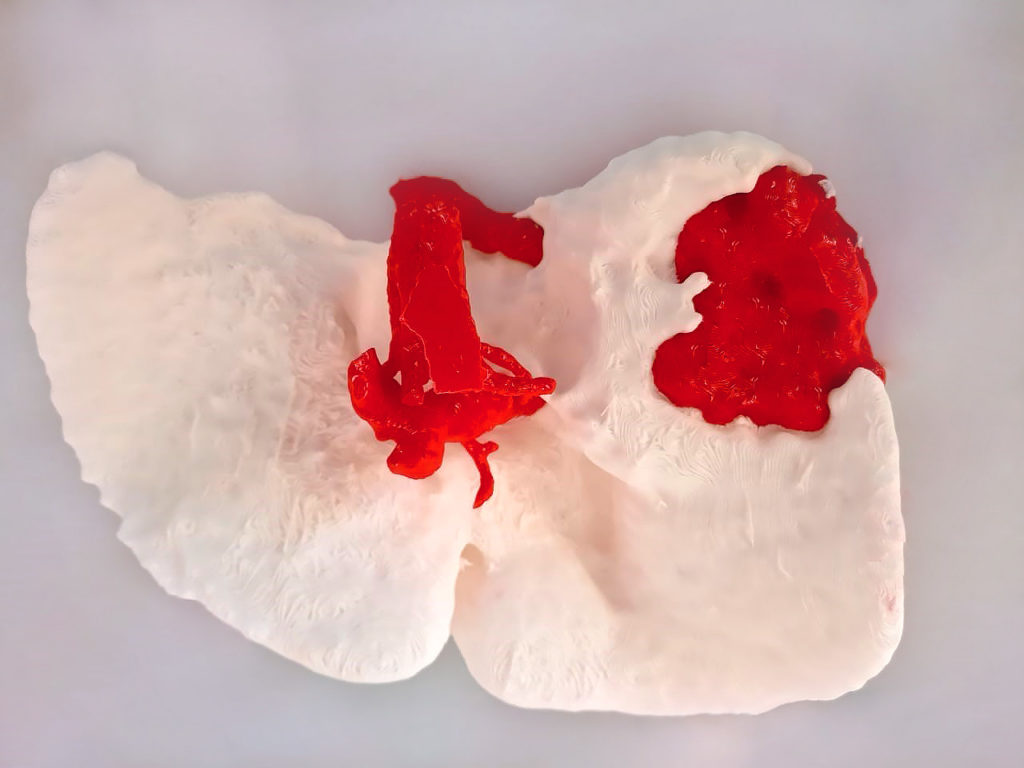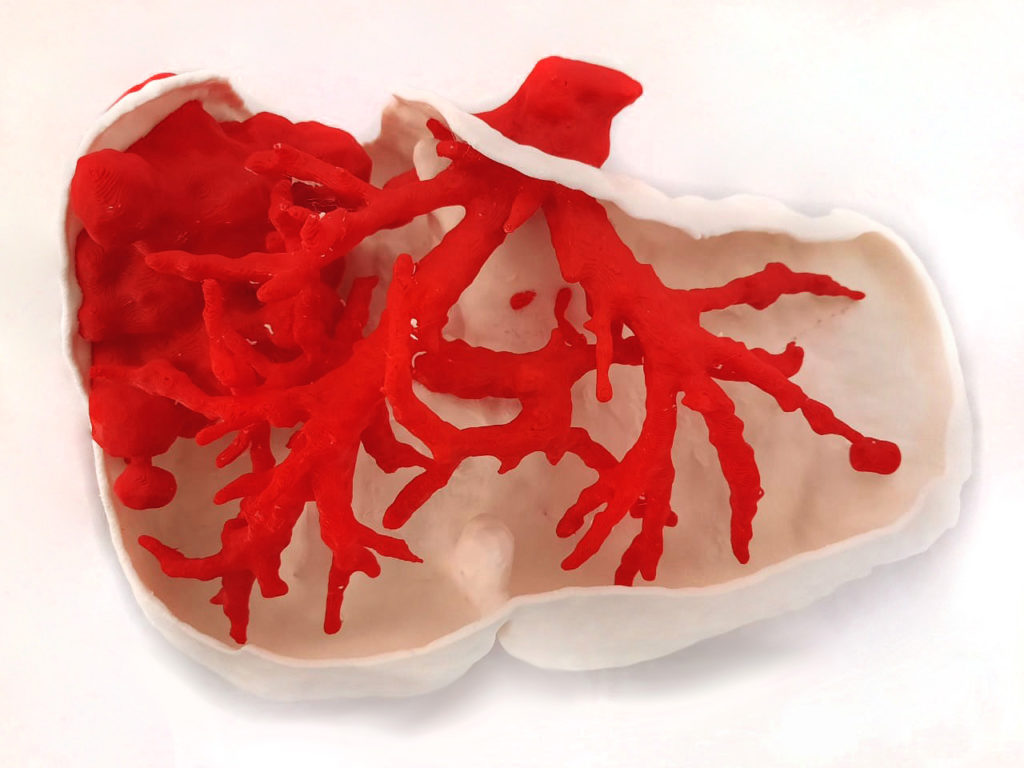Since BCN3D has introduced its IDEX-based 3D printing technology to the market, we’ve seen what it is capable of in the games industry, automotive and other industries. With the growing use of 3D printing in the biomedical industry, the Spain-based manufacturer has explored the type of applications that could be achieved using its FDM 3D printing process.
In this vein, Dr Gustavo Nari recently shared a good example of biomedical applications. The Argentina-based doctor has collaborated with Mirai3D to develop and manufacture biomedical models that would improve his surgical planning process.
Mirai3D is a biomedical engineering startup that leverages 3D printing, virtual reality, and advanced materials to deliver solutions in the healthcare sector. The start-up creates biomodels to design surgical plans for a better anatomical understanding of clinical cases. Such surgical models are especially crucial in oncology where doctors have to navigate in and around vital organs.
As we saw several times with other companies like Materialise providing medical 3D printing-dedicated solutions, 3D printed guides help doctor to know what exactly how they will work in the theatre room.
In this specific case, Mirai3D has combined X-rays and 3D printing technology to enable doctors to use scans of the patient for the creation of the desired virtual model. To explain the procedure to the patient in an easy-to-follow way without the confusion of medical jargon, removing this way any anxieties that may often rise in such situation, but also to practice the operation, it was important to have a 3D printed model that should reflect lifelike dimensions.
That’s exactly where IDEX technology comes into play. With its ability to process two colours simultaneously, the biomedical engineering team used PLA to print at a resolution of 0.02mm.

The patient and the surgery
BCN3D that relates the story explains that the patient is a 65-year-old woman, with one liver metastasis in the right lobe and another small one in the left.
Due to her complex clinical history – which includes a double primary ovarian and colorectal tumor surgery and adjuvant treatment as well as low values of congenital thrombocytopenia (between 16 thousand and 25 thousand platelets when normal levels are above 150 thousand) -, it was of paramount importance to reduce any large haemorrhages.
In the operating room, Dr. Nari achieved a right hepatectomy together with a limited resection of the metastasis associated with the left lobe.
According to the source, at this point, the physical 3D model was used along with the virtual one for reference. The use of the biomodels meant that the doctor could view the problem of the tumor with its associated vascularization and physiological liver vascularization, facilitating a quicker surgery time. It provided an accurate reference of her vascular structure which was particularly important due to her pathology in relation to blood coagulation.
“Thanks to the use of this 3D model, the surgical time could be reduced by approximately 45 minutes, resulting in a total surgery time of 3 hours”, Dr. Nari enthuses.
Remember, you can post job opportunities in the AM Industry on 3D ADEPT Media free of charge or look for a job via our job board. Make sure to follow us on our social networks and subscribe to our weekly newsletter : Facebook, Twitter, LinkedIn & Instagram ! If you want to be featured in the next issue of our digital magazine or if you hear a story that needs to be heard, make sure to send it to contact@3dadept.com








